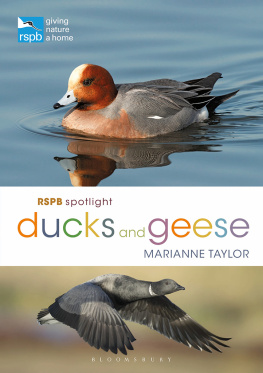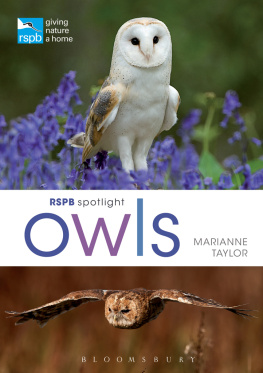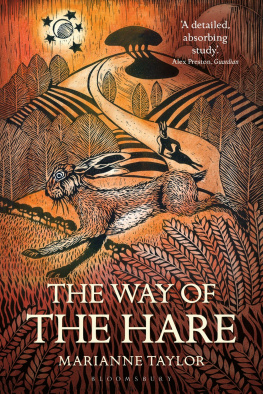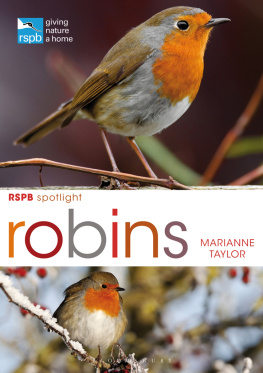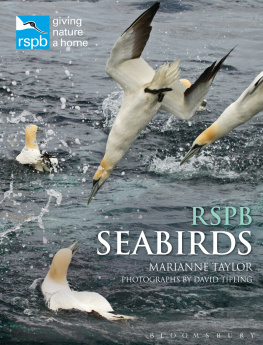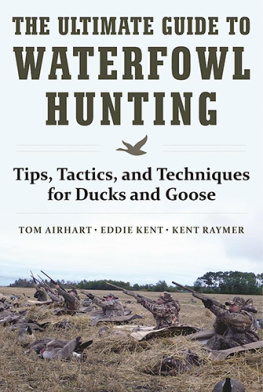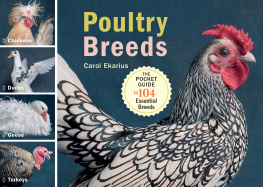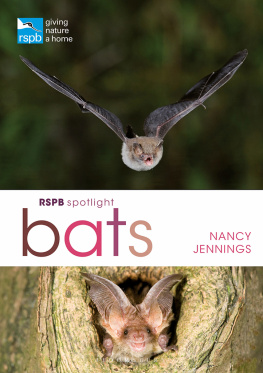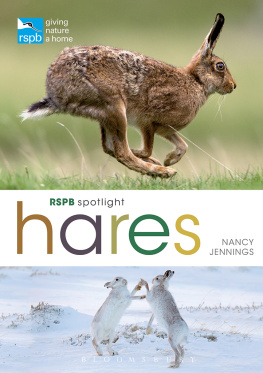
BLOOMSBURY WILDLIFE
Bloomsbury Publishing Plc
50 Bedford Square, London, WC1B 3DP, UK
This electronic edition published in 2020 by Bloomsbury Publishing Plc
BLOOMSBURY, BLOOMSBURY WILDLIFE and the Diana logo are trademarks of Bloomsbury Publishing Plc
First published in the United Kingdom, 2020
Copyright Marianne Taylor, 2020
Copyright 2020 photographs and illustrations as credited
Marianne Taylor has asserted her right under the Copyright, Designs and Patents Act, 1988, to be identified as Author of this work
For legal purposes the constitute an extension of this copyright page
All rights reserved
You may not copy, distribute, transmit, reproduce or otherwise make available this publication (or any part of it) in any form, or by any means (including without limitation electronic, digital, optical, mechanical, photocopying, printing, recording or otherwise), without the prior written permission of the publisher. Any person who does any unauthorised act in relation to this publication may be liable to criminal prosecution and civil claims for damages.
Bloomsbury Publishing Plc does not have any control over, or responsibility for, any third-party websites referred to or in this book. All internet addresses given in this book were correct at the time of going to press. The author and publisher regret any inconvenience caused if addresses have changed or sites have ceased to exist, but can accept no responsibility for any such changes
A catalogue record for this book is available from the British Library
Library of Congress Cataloguing-in-Publication data has been applied for
ISBN: 978-1-4729-7164-7 (PB)
ISBN: 978-1-4729-7166-1 (eBook)
ISBN: 978-1-4729-1765-4 (ePDF)
Design by Susan McIntyre
To find out more about our authors and their books please visit www.bloomsbury.com where you will find extracts, author interviews and details of forthcoming events, and to be the first to hear about latest releases and special offers, sign up for our newsletters.

Published under licence from RSPB Sales Limited to raise awareness of the RSPB (charity registration in England and Wales no 207076 and Scotland no SC037654).
For all licensed products sold by Bloomsbury Publishing Limited, Bloomsbury Publishing Limited will donate a minimum of 2% from all sales to RSPB Sales Ltd, which gives all its distributable profits through Gift Aid to the RSPB.
Contents

Meet the Ducks and Geese
Whether you are wandering around the pond in your local park or exploring a vast estuary on some wild and remote stretch of coastline, you will encounter some of the UKs many species of ducks and geese. Charming, comical and breathtaking in equal measure, these are the best known and most beloved of our waterbirds, although some of the British species are far from familiar. Many of those that we see in winter have come here from the high Arctic, escaping colder weather in their breeding grounds; some are true seabirds and rarely seen inland.

White- fronted Geese are native birds that visit the UK in winter. They are easily identified by the distinctive black bars on their belly and the large white patch on their head.
Ducks and geese are mostly medium or large birds that are adapted to live in and around water for part or most of their lives. They are plump-bodied, with dense, water-repelling plumage, they have short, strong legs, and their front three toes are connected by webbing, to allow them to swim with strokes of their feet underwater. They typically have medium-length, flattened, blunt-tipped bills. Their wings are usually powerful but relatively small for their body size, and while some can fly very fast, their flight is not very energy efficient and a few species cannot fly at all.

Long-tailed Ducks nest in the Arctic and visit our northern coasts in winter.

Drake (male) Mallards acquire their resplendent breeding plumage in early winter.
Most ducks and geese are very sociable not only with their own kind but also with their close relatives. The sight and sound of thousands of calling geese flying overhead against a dawn sky are awe-inspiring, and a colourful mixed flock of wild ducks on a winter lake is not only a beautiful sight but an exciting identification challenge for keen birdwatchers.

Tundra Bean Geese migrate from Russia to central Europe in winter, though only small numbers reach the UK.
Classifying wildfowl
The group of birds we call wildfowl are the ducks, geese and swans. They form the bird family Anatidae and are all somewhat similar to look at, in superficial ways at least, with broadly similar behaviours and lifestyles. They are all closely related, descending from a shared ancestor that lived some 2535 million years ago.
The birds of the world are divided into 40 taxonomic groupings, called orders. Each of these broad divisions is further divided into one or more families. In the case of Anseriformes, the order to which ducks and geese belong, there are just three families. Worldwide, ducks and geese between them number 174 species, and along with about seven species of swans, they make up the family Anatidae. This family is by far the largest of the three in the order Anseriformes; the other two are Anhimidae (the screamers peculiar chicken-like birds of South America) and Anseranatidae (a single species the Magpie Goose, Anseranas semipalmata, a bizarre early offshoot of the lineage that evolved into modern ducks and geese).
Within each family there is at least one genus. The family Anatidae contains 53 genera. Each genus contains at least one species and often many more. For example, the genus Anser, the grey geese, contains eight species; and the genus Anas, the dabbling ducks, includes about 30.

Its unusually long legs make the Magpie Goose (left) suited to a more terrestrial life than most other wildfowl. The Cape Barren Goose (Cereopsis novaehollandiae, right) is a peculiar species native to southern Australia.

The Spectacled Eiders close evolutionary relationship to the Common Eider is evident in its appearance.

